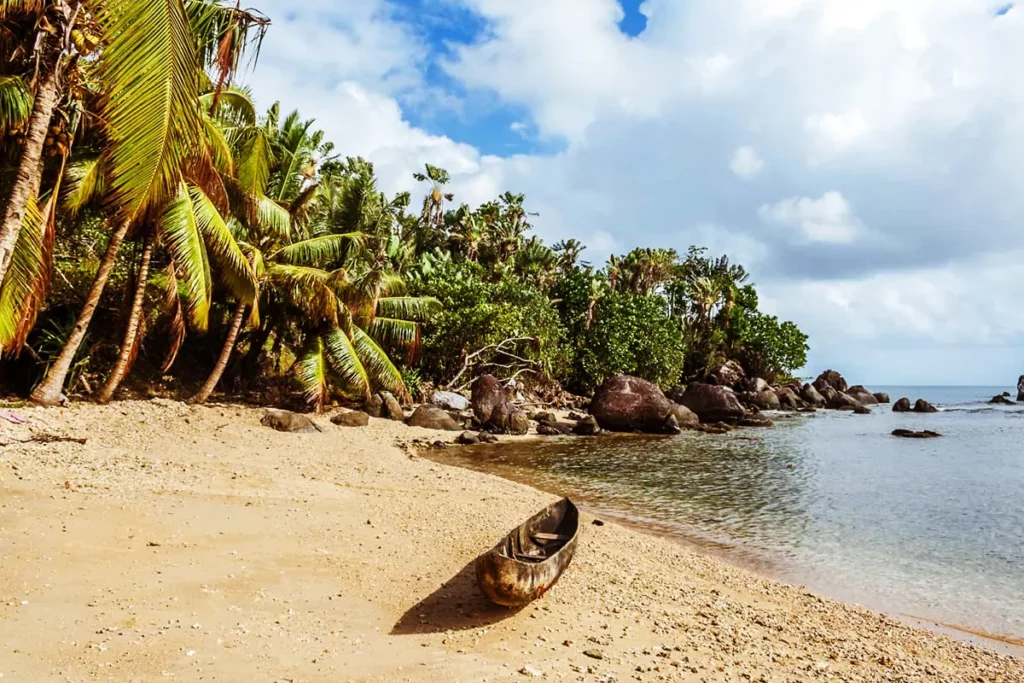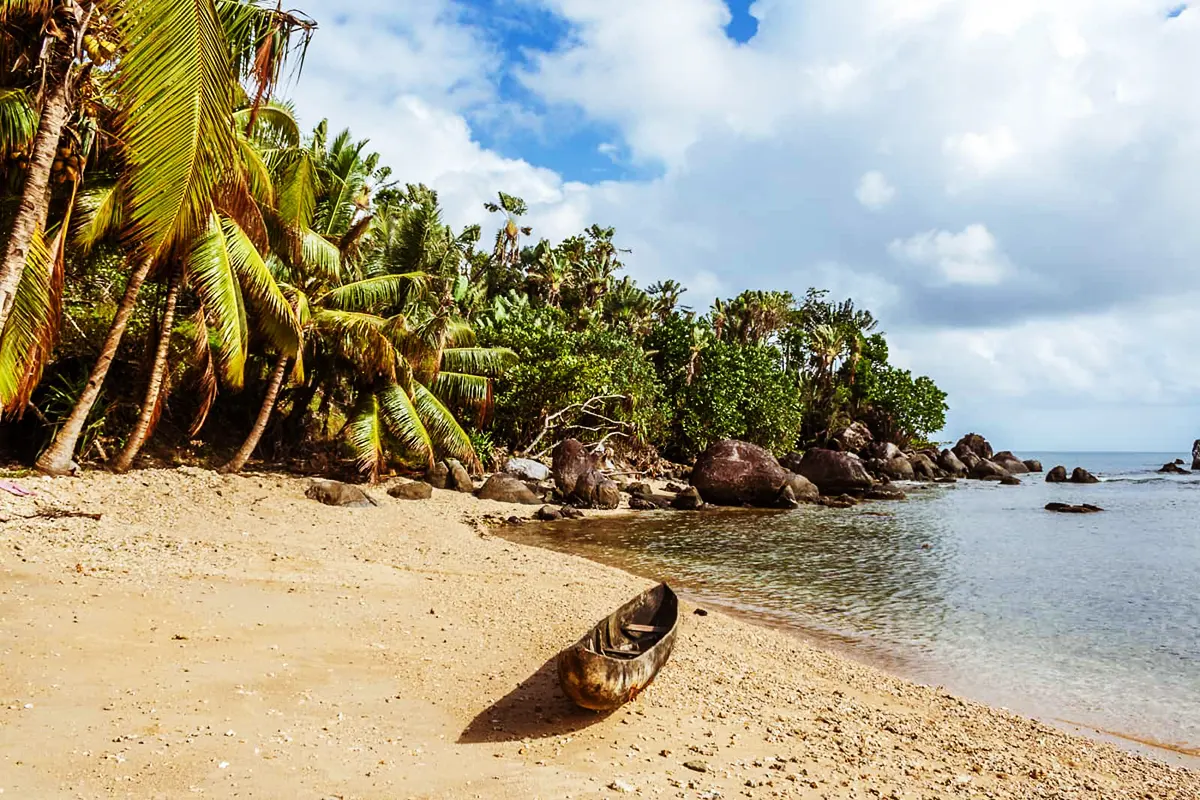
Imagine speaking a language separated from its closest relatives by thousands of kilometres. Imagine if these languages were part of an immense family that spanned more than three-quarters of the globe. Before Europe’s Age of Exploration, speakers of this language family had navigated the oceans without a compass and colonised a massive area from Madagascar off the East Coast of Africa to Easter Island, not far from the West Coast of South America.
Meet Austronesian. Originating from Taiwan millennia ago, ancient mariners on sophisticated boats settled the islands of what is now the Philippines and Indonesia before spreading east and west. As their languages change, evolve and split into other languages over time, modern descendants include Malagasy – the official language of Madagascar, Bahasa Indonesia, Bahasa Malaysia and Tagalog – languages with huge numbers of speakers in Southeast Asia – along with thousands of other languages spoken on the islands of the Pacific: Chamorro, Kiribati, Fijian, Samoan, Tongan, Tahitian, Maori, Hawaiian, Rapa Nui and so forth.
The languages spoken by the descendants of these intrepid seafarers are diverse but they share a common set of vocabulary linking them back to their distant ancestors in Taiwan. Interestingly, Aboriginal groups still exist in Taiwan and they still speak languages belonging to this huge family.
Shared words
Amazingly, the ancient words brought by sea to the farthest reaches of the Pacific have remained incredibly stable these past few thousand years. Hawaiian sailors call the sail of a boat a lā and this word is related to the word layar also meaning “sail” in Bahasa Indonesia and Bahasa Malaysia. Meanwhile, Filipinos say layag, Chamorro speakers say layak and Madagascans say lay – all meaning “sail”!
“Fruit” is hua in Maori and Hawaiian, vua in Fijian, buah in Bahasa Indonesia and Bahasa Malaysia and voa in Malagasy! A stone or pebble is a whatu in New Zealand Maori, vatu in Fijian, batu in Bahasa Indonesia and Bahasa Malaysia, bato in Tagalog and vato in Malagasy.
And that’s not all. The word for “five” is lima in Hawaiian, Samoan, Bahasa Indonesia, Bahasa Malaysia and Tagalog! All pronounced in the exact same way!
A Tahitian calls his or her eyes mata. Guess what? Well, so do New Zealand Maori, Tongans, Samoans, Fijians, Easter Islanders and even Taiwanese Aboriginal tribes like the Bunun and the Amis, Malaysians, Indonesians and Filipinos! This exact same word has remained unchanged for thousands of years!
Shared History, Shared Origins
Using traditional navigational methods, ancient sailors made perilous journeys across thousands of kilometres of ocean. They brought along their families, their material belongings, their livestock and even their pets wherever the ocean currents took them. Their descendants now span the globe from Taiwan, to Madagascar, to Southeast Asia, to the farthest corners of the Pacific Ocean. The languages they speak to this day carries echoes of their ancient shared ancestry, a testament to human determination, ingenuity and adaptability.
